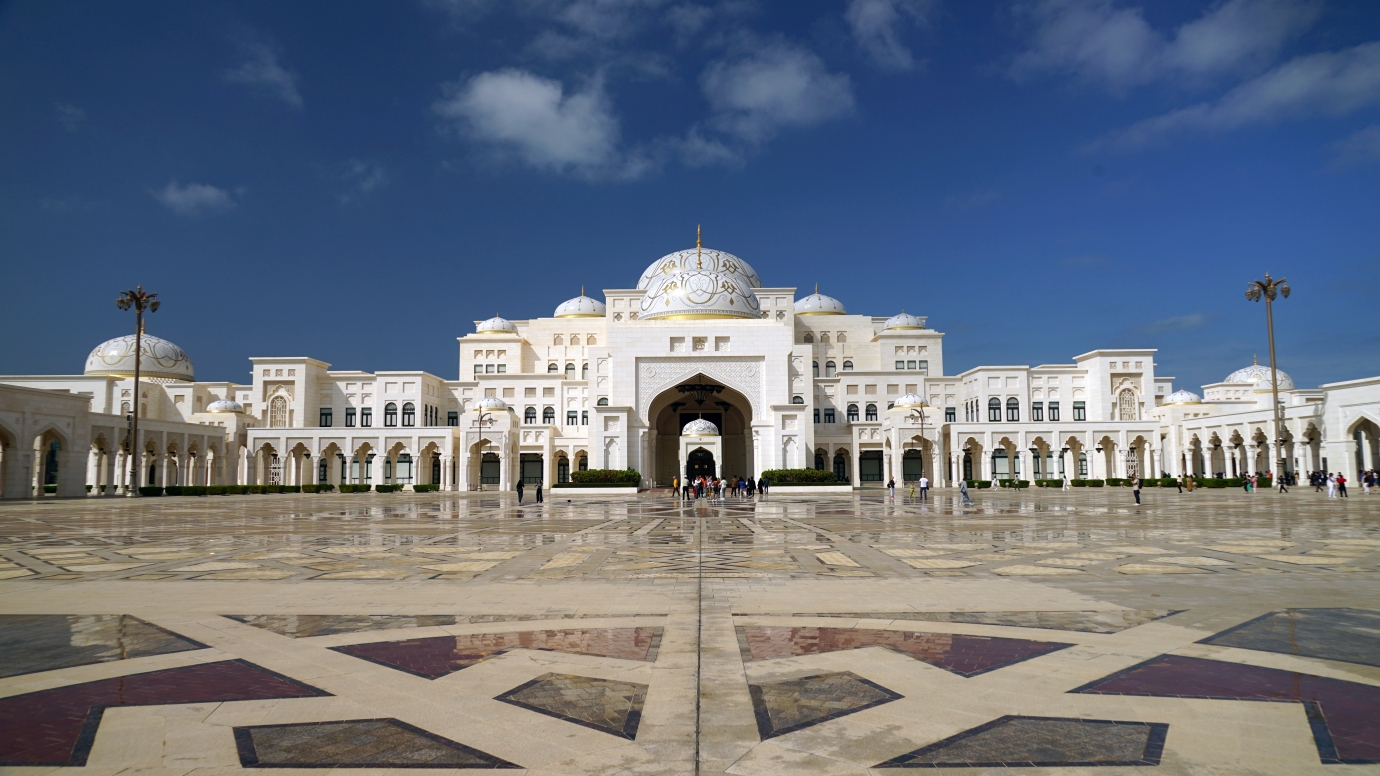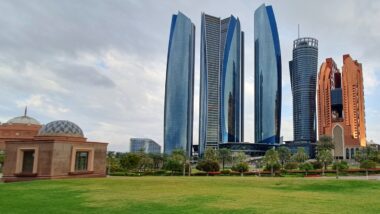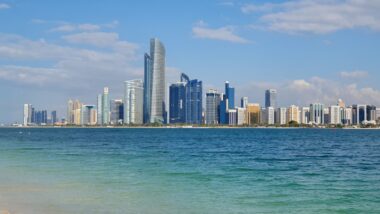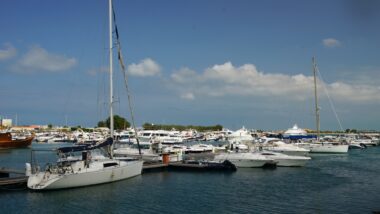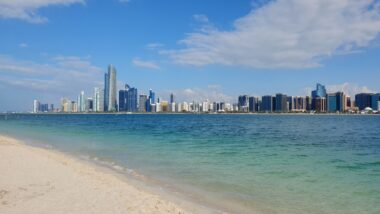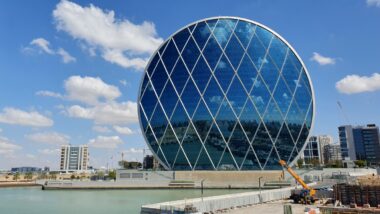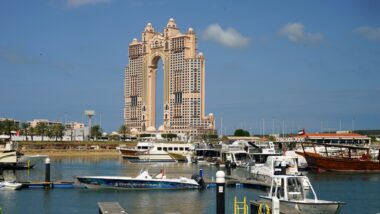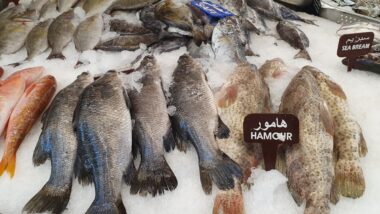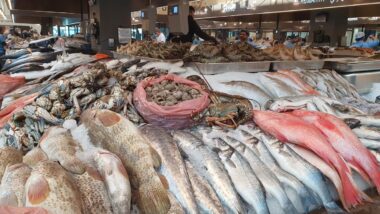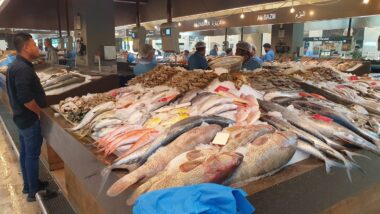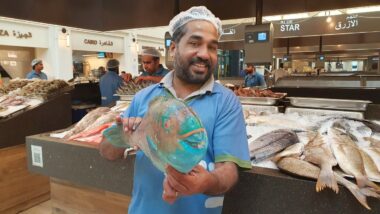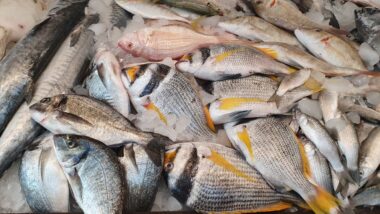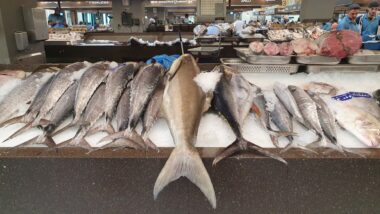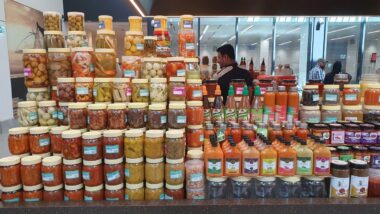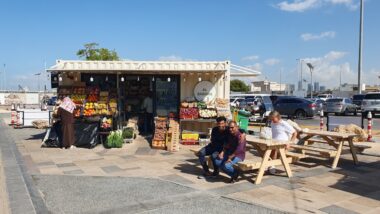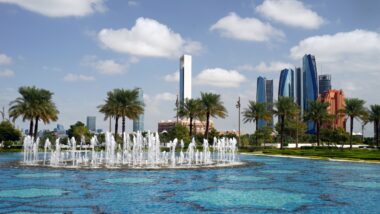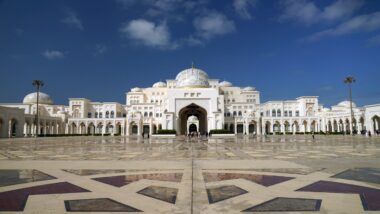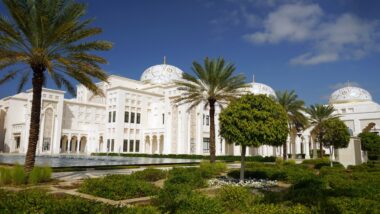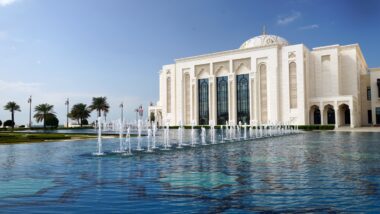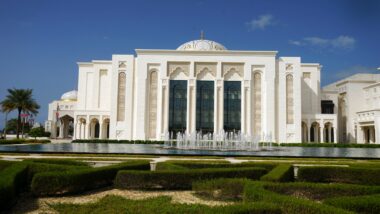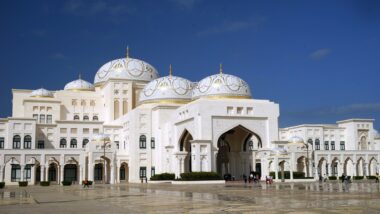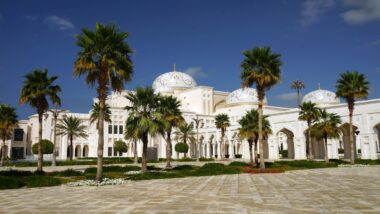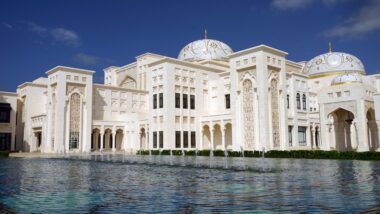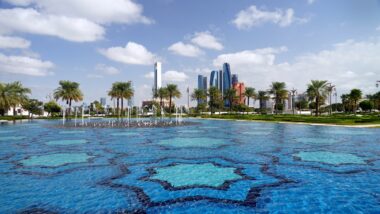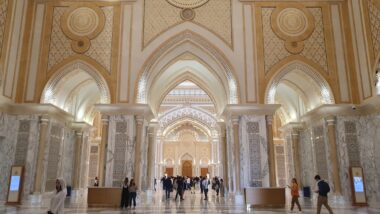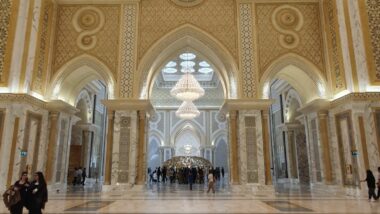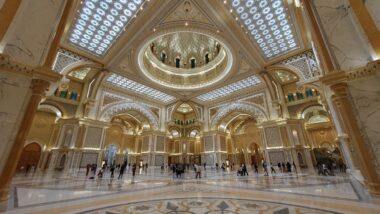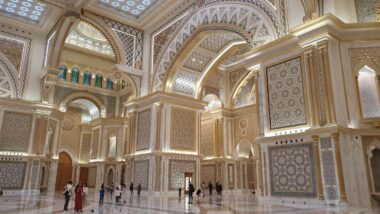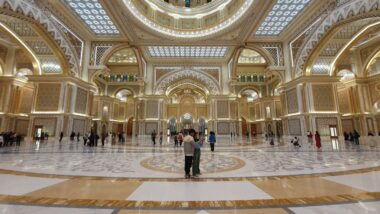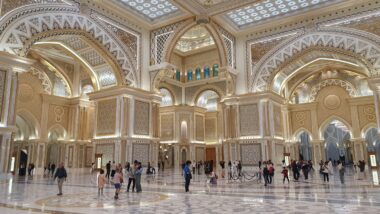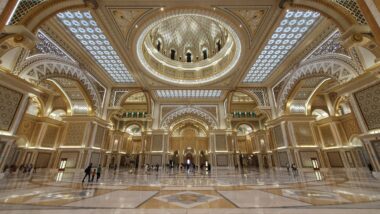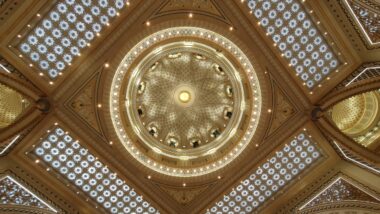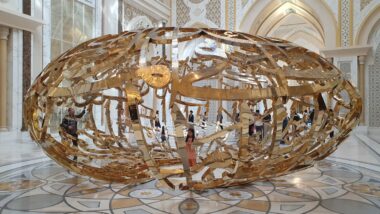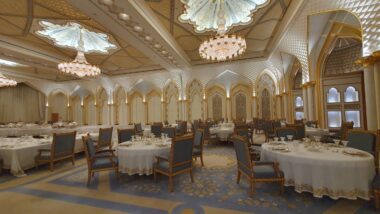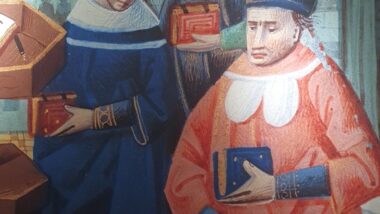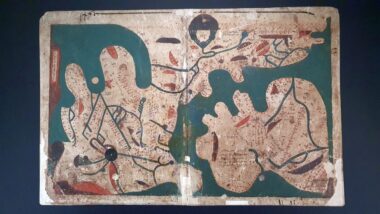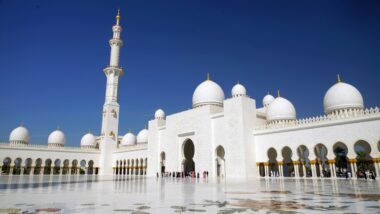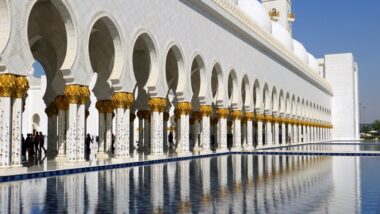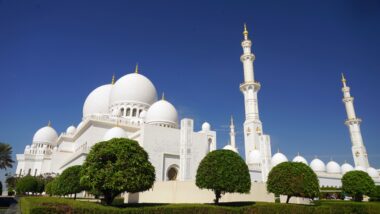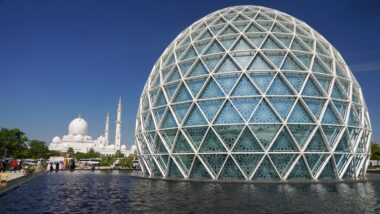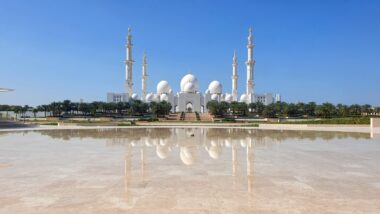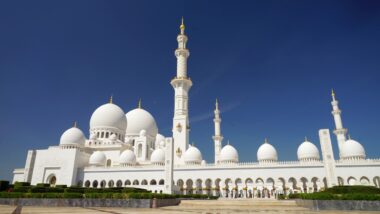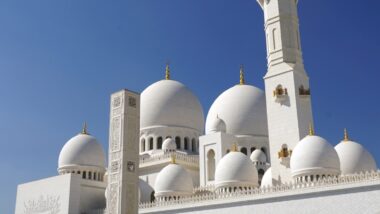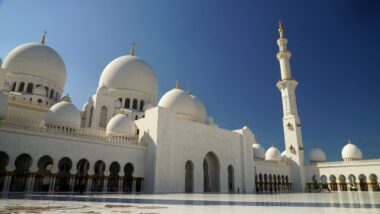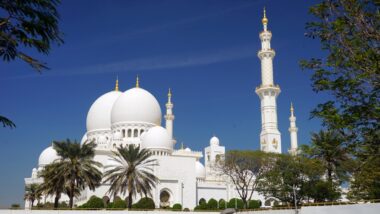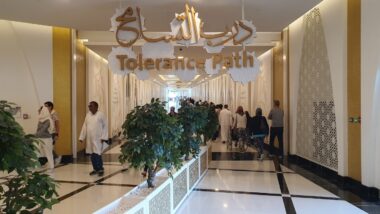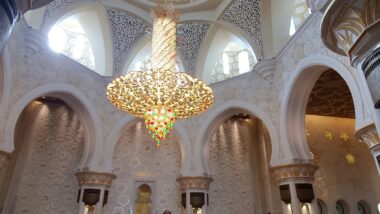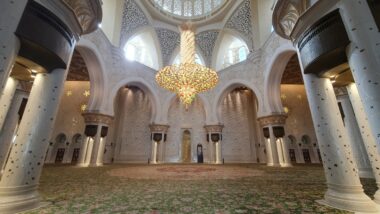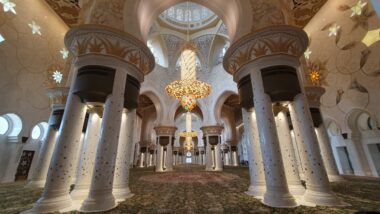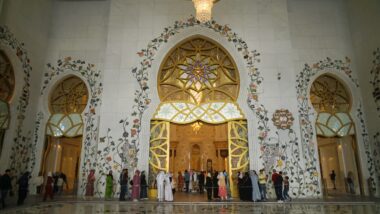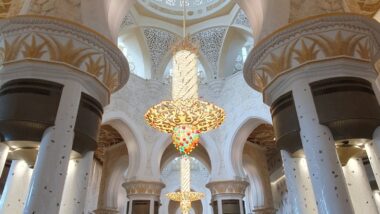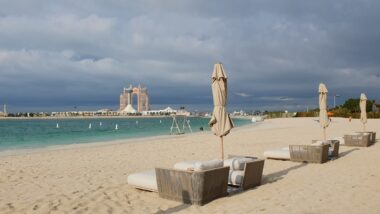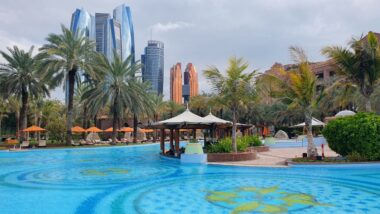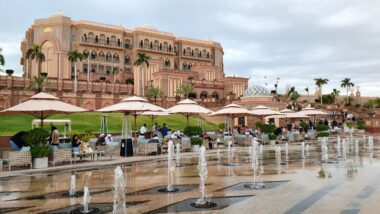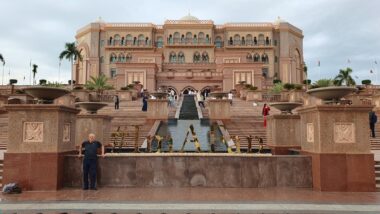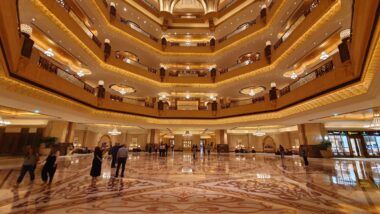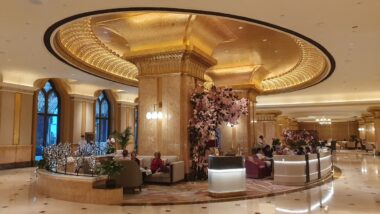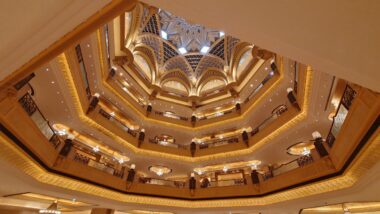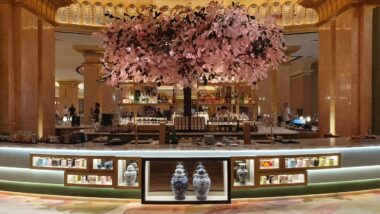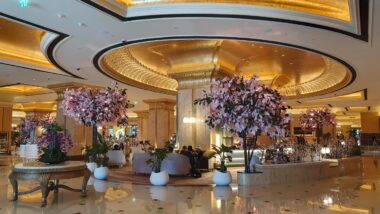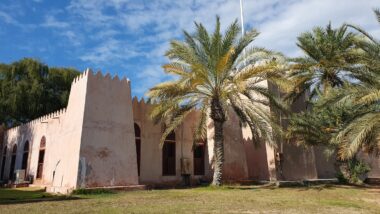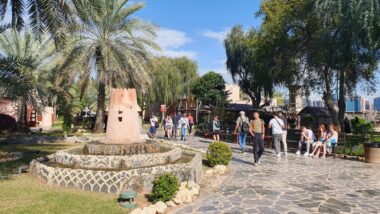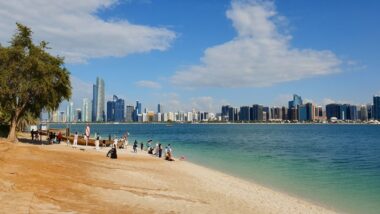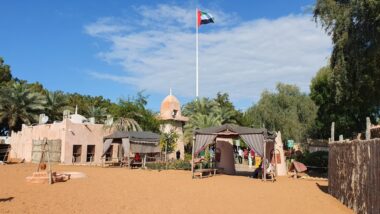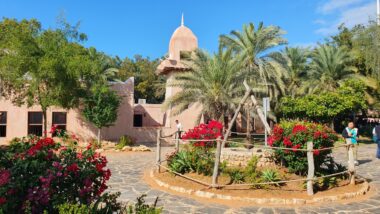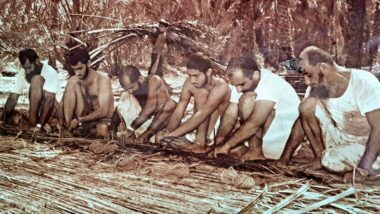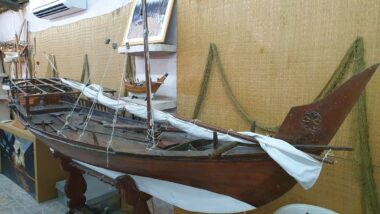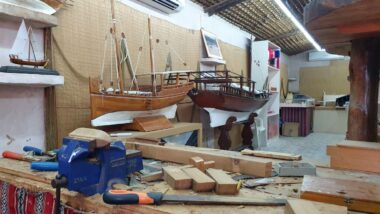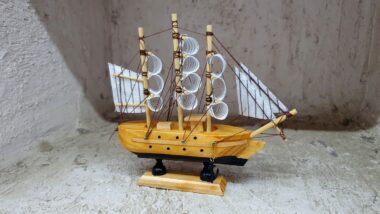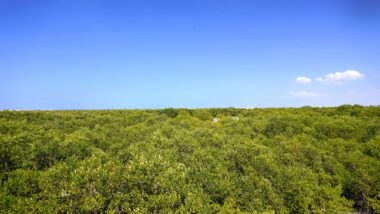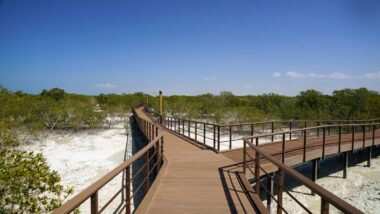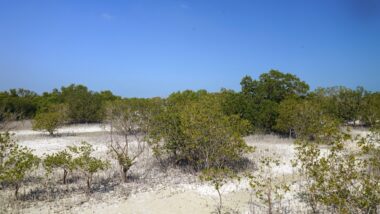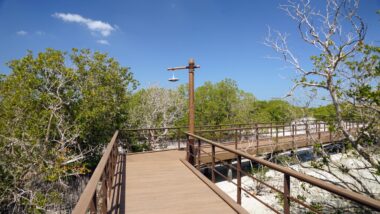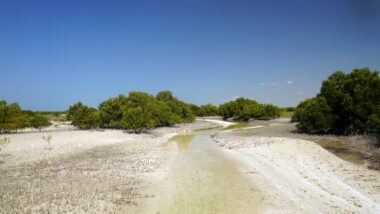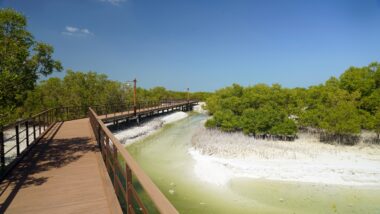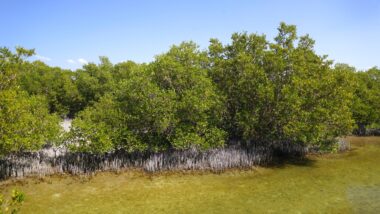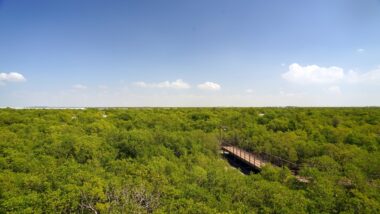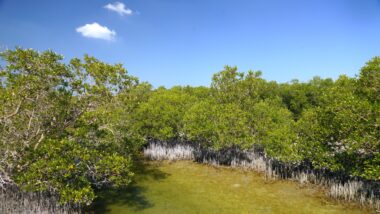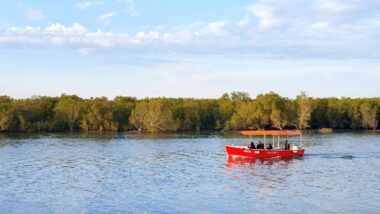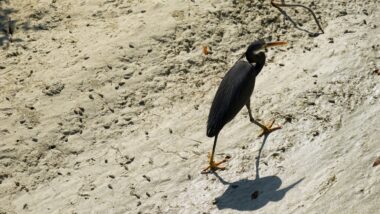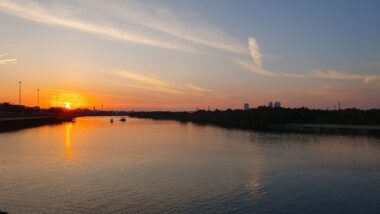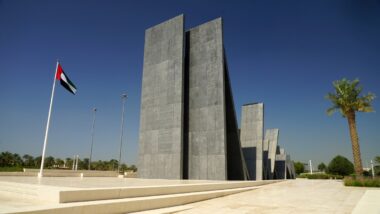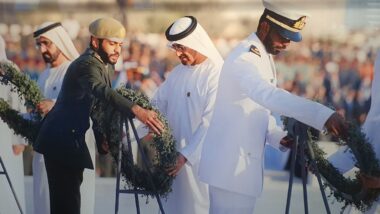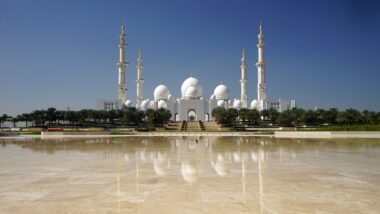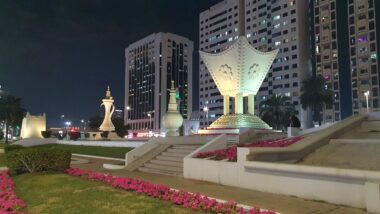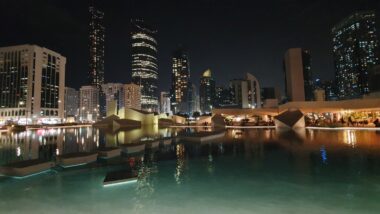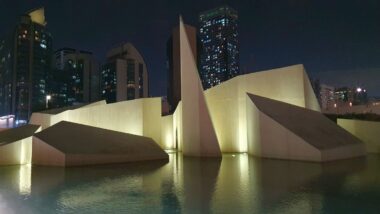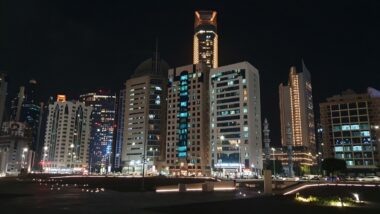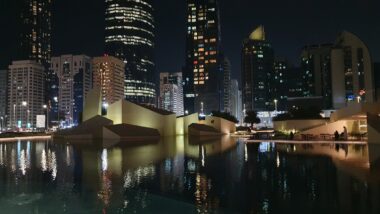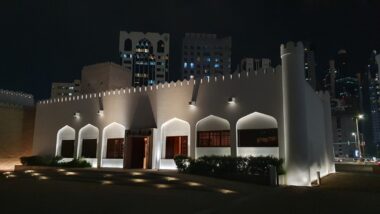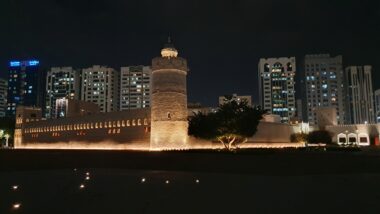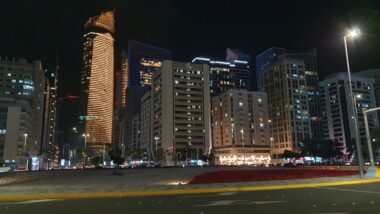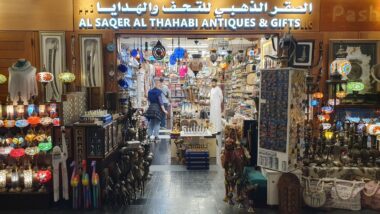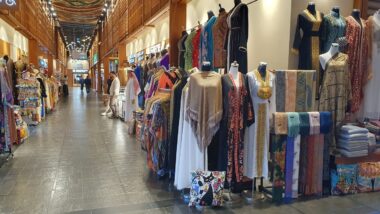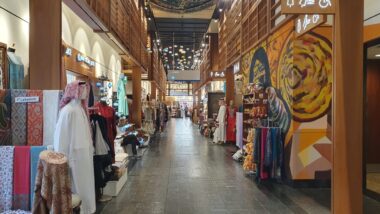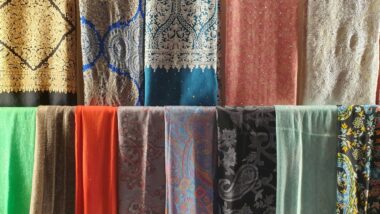We had a few rainy days in proudly modern and cosmopolitan Abu Dhabi, the UAE’s forward-thinking cultural heart, where nothing stands still. The city occupies most of a small triangular island of the same name, just off the Persian Gulf coast and connected to the mainland by a short bridge. Abu Dhabi was formerly an undeveloped town of only local importance, but the emirate’s oil revenues enabled it to evolve into a modern city with a fully developed infrastructure.
No settlement existed at Abu Dhabi town before 1761, when tribesmen of the Āl Bū Falāh clan of the Banū Yās confederation, rulers of Abu Dhabi then as now, settled there. They moved their headquarters to this coastal islet from the inland Līwā (Al-Jiwāʾ) oasis in 1795. Through most of the 19th and early 20th centuries, the town, though the capital of one of the chief sheikhdoms of the Trucial Coast, yielded pride of place in trade and economic importance to the towns of Dubai and Sharjah, capitals of neighboring Trucial sheikhdoms. At the beginning of the 20th century, Abu Dhabi town’s population was estimated at 6,000, and pearl diving from the rich offshore banks and some local trade (chiefly in the hands of Iranians and Indians) sustained the economy. Pearling declined with the development of the Japanese cultured pearl industry and the worldwide economic depression beginning in 1929.
The discovery (1958) and commercial production (since 1962) of the rich oil fields of Abu Dhabi emirate revolutionized the political and economic position of the town. Great Britain, as the protecting power of the then Trucial States, established a separate Political Agency at Abu Dhabi in 1961, removing the sheikhdom from dependence on the political agent at Dubai. As the capital of the chief oil-producing state in the region, Abu Dhabi town had large sums available for urban development. The town modernized slowly, however, because of the extremely conservative policies of Sheikh Shakhbout ibn Sultan Al Nahyan (reigned 1928–66). In 1966, he was deposed in favor of his younger brother, Zayed ibn Sultan. Under an ambitious five-year development plan inaugurated in 1968, the town was thoroughly modernized. When the United Arab Emirates achieved political independence (December 1971), a compromise decision made Abu Dhabi the provisional national capital. It was made the permanent capital of the United Arab Emirates in the early 1990s.
We visited Sheikh Zayed Grand Mosque (🎟️free), rising majestically from manicured gardens. With more than 80 marble domes on a roof-line held aloft by 1000 pillars and punctuated by four 107m-high minarets, it’s a masterpiece of modern Islamic architecture and design. More than 90,000 tonnes of pure white marble from the Republic of Macedonia were used in its construction. The chandeliers, the largest of which weighs approximately 11 tonnes, sparkle with Swarovski crystals and shine with 40kg of 24-karat galvanized gold. One of the prayer hall’s most impressive features is the world’s largest loomed carpet fashioned from Iranian cotton and New Zealand wool and flown in from Mashad, Iran, on two airplanes. The medallion design with elaborate arabesque motifs took 1200 craftspeople two years to complete, half of which was spent on hand-knotting the 5700 sq meters of woolen thread on a cotton base. That translates as 2.268 billion knots.
Our next stop was Emirates Palace, where the friendly head of security, Paul, not only allowed us to park within the complex but also organized for us the visit to one of the most luxurious hotels in the Gulf, built for Dhs11 billion.
Wahat Al Karama memorial, opposite the eastern side of the Grand Mosque, was inaugurated in 2016 in memory of Emiratis who have given their lives in service to the nation. The main monument, a leaning stack of 31 mammoth aluminum-clad tablets inscribed with poems and quotations from prominent UAE figureheads, sits in front of a Memorial Plaza fashioned from Turkish travertine stone centered around a shallow, circular pool which reflects both the panels and the Grand Mosque just across the busy highway.
We had a peek at the Qasr Al Watan (Presidential Palace, 🎟️39 AED), the white-washed compound housing the Presidential Palace of Abu Dhabi, which was built in 2015 and closed to the public until 2019. The palace has huge onion-shaped domes, glistening gilded interiors, plush furniture, and pruned-to-perfection gardens.
We took a look at Al Mina Fish Market, which is now in a new building, then stopped at the world’s first circular skyscraper, Aldar Headquarters, and after that, wandered around the Heritage Village, which looks now like a souvenir market. At the end of our stay, we took a 2-kilometer boardwalk to experience the mangroves close up in Jubail Mangrove Park (🎟️15 AED).
City views
Fish market Mina
Qasr Al Watan
Sheikh Zayed Grand Mosque
Emirates Palace
Heritage Village
Abu Dhabi Mangrove´s
Wahat Al Karama
City by night
Parking location – Abu Dhabi: 24.445130N 54.431249E (🚻-10 minutes walk)


